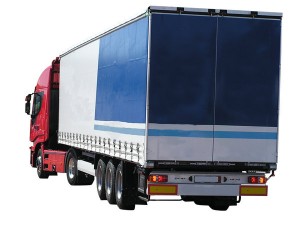
WorkSafe Victoria have a guide at http://www.worksafe.vic.gov.au/ that outlines the key considerations that need to be taken into account when loading and unloading these vehicles:
Every year there are about 100 serious injuries associated with restraining and containing loads. Injuries are mainly caused by:
- Handling side-gates on trucks
- Opening and closing side-curtains on trucks
- Placing lashings and corner protectors over loads
- Using tensioning devices with chains and webbing.
Road transport operators need to:
- Address hazards associated with these tasks as well as any hazards to public safety
- Assess the risk associated with each hazard identified
- Consider the likelihood of the hazard causing harm to a person, and the level of harm
- Work out the available controls (including their costs) to eliminate the risks or reduce so far as reasonably practicable
Handling side gates on trucks
Lifting and carrying gates on trucks requires repetitive force and puts workers at risk of musculoskeletal injuries to the back, shoulders, arms and hands.
Workers are also at risk of gates hitting or trapping them, causing injuries to the head, back, shoulders and hands.
Recommendations
It is recommended you use the first listed control where possible and the fourth control as your last option.To eliminate or reduce the risk of injuries while handling gates on trucks and trailers:
- 1. Consider whether or not you need to use gates to contain the load. There may be a more effective method (see point 2). Ensure you still meet the LRG performance standards.
Note: Gates alone do not ‘restrain’ loads unless they have been professionally designed and assessed. There are circumstances when gates can effectively ‘contain’ loads. If containing dangerous goods, the Australian Code for the Transport of Dangerous Goods by Road and Rail (ADG7) requires dangerous goods to be carried on vehicles with rigid sides, fitted with gates or in approved segregation bins.
- 2. Use an alternative load restraint but only if suitable for your load. These include:
- Vehicles with sturdy walls. For example a folding side or sliding panel vehicle. See images 1 and 2 on the following page
- Vehicles custom-designed for loads. For example some pallet loads may suit a vehicle with combination internal side and middle expanding walls, combined with an inward sloping floor and load-rated curtain
- Curtains that are load-rated on a curtain-sided vehicle (eg tautliner). Manufacturer instructions for load type, weight and placement must be followed. Load-rated curtains are designed and assessed to keep certain loads restrained
- Chains or webbing capable of securing the load (ensure you still meet the LRG performance standards)
Source:http://www.worksafe.vic.gov.au/__data/assets/pdf_file/0011/10352/03275_LR_Guidance_Note_Web.pdf
For the full guidance note that includes information about the different types of restraints and how to use them see the WorkSafe Victoria link above and ensure that your load is properly re-strained or contained every time that you hit the road.



